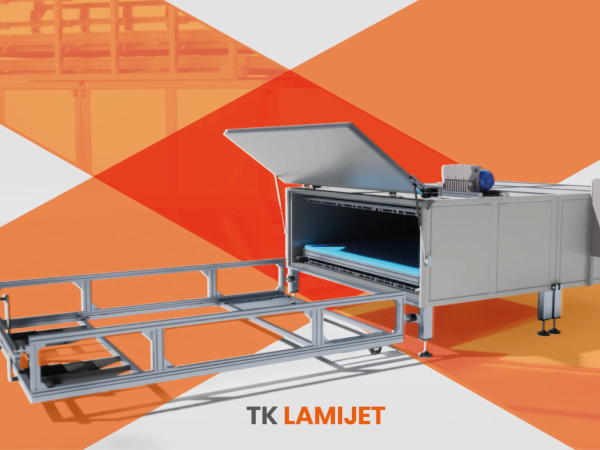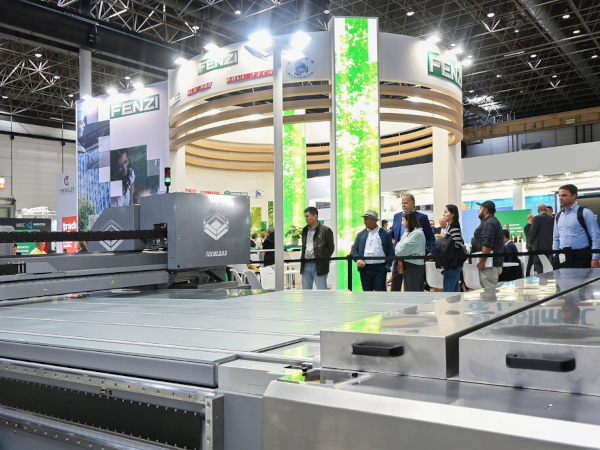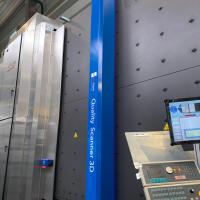Date: 19 October 2015
The two scientists Takaaki Kajita (Japan) and Arthur B. McDonald (Canada) have now been awarded the Nobel Prize for Physics for providing this evidence that had been lacking in particle physics. The research work at the Sudbury Neutrino Observatory (SNO) in Canada was able to prove that neutrinos change their type while they fly from the sun to the earth. Specialty glass components with excellent optical and physicochemical properties in the SNO’s photomultipliers have contributed to bringing more light into the darkness of the previous neutrino research.
Hardly a particle provides such deep insights into the processes and the history of our universe as the neutrino. Wolfgang Pauli even predicted this back in 1930. For some time, however, it was considered a “ghost particle” until Frederick Reines and Clyde Cowan succeeded in presenting the experimental evidence in 1956. Around 60 years later, the Royal Swedish Academy and the Nobel Prize Committee has now honored the neutrino researchers Takaaki Kajita (Japan) and Arthur McDonald (Canada) with the Nobel Prize in Physics. By conducting experiments, the research teams in Japan and Canada managed to gain more secrets on these elusive particles and thus “fundamentally change the understanding of matter and the universe,” the jury said. After all, the standard model of particle physics had always assumed that neutrinos have no mass, but this could now be disproved. Neutrinos, of which there are three types: electron, tau and muon neutrinos, can transform themselves. This presupposes a difference in mass, ergo: neutrinos have mass.
In the experiments performed using the Japanese Super Kamiokande Detector back in 1998, evidence was already found that the muon neutrinos that are created when cosmic rays collide with the Earth's atmosphere change into another type. The research team led by the Canadian Arthur B. McDonald focused on the so-called electron neutrinos, however. These are produced by nuclear reactions in the sun during the fusion of hydrogen into helium. Every second, 65 billion neutrinos per square centimeter land on Earth! At the beginning of the millennium, scientists at the SNO were able to prove that these neutrinos are also subjected to oscillations, in other words, they change from electron into tau and muon neutrinos on their way to Earth.
All types of neutrinos have an extremely low cross section, therefore reactions with other particles hardly ever take place. This makes them “incorruptible witnesses” for science because they tell the true story of the universe. Their low cross section places high demands on neutrino detectors, the measuring instruments with which they can be detected, however.
Precise instruments require high-purity glass components
The costs of building a neutrino telescope like the SNO were extremely high. It is not only the size of a ten-story building, but is also to buried two kilometers deep into a nickel mine. The reason for building it under the ground is that cosmic background radiation must be filtered so it cannot distort the measurements.
Around 1,000 tons of high-purity heavy water filled inside a plastic sphere twelve feet in diameter form the heart of the detector. The heavy water that is needed in order to detect the reaction consists of oxygen and deuterium. When flying through this, neutrinos produce very few individual light particles (photons). Photomultipliers are needed to detect them. These are extremely sensitive instruments that can detect individual photons by transforming them into electrical signals and amplifying them. They are “the eyes of the detector” and are distributed throughout the entire surface of the water ball. Due to how they are arranged and the extremely pure water, it is possible to not only measure the energy of the neutrinos, but also to determine their origins.
The photomultipliers are surrounded by a vacuum-sealed glass bulb that protects them. The material used is not “normal” glass, but rather special-purpose glass with unique optical properties that allows the ultraviolet radiation from the photons measured to pass through. Scientists from the Canadian Neutrino Observatory had turned to SCHOTT to have these glass components manufactured back in the 1990s.
“The demands placed on the photomultipliers were extremely demanding. A glass had to be developed specifically for this application and offer excellent optical and physicochemical properties,” materials expert Dr. Werner Kiefer, who was responsible for the SNO Project at the time, recalls. The glass experts used the glass type 8246, which had been further developed specifically to meet these high demands. The experts always worked at the limit of what is technically feasible in terms of choosing the raw materials, using specially constructed melting tanks, during transport and with the testing tools. “And it always came down to extreme purity,” Dr. Kiefer says. “Just to play it safe, we had the raw materials analyzed at the Institute of Nuclear Chemistry in Mainz.” The Mainz-based specialty glass manufacturer produced a total of 12,000 individual pieces. “All by hand - and we didn’t receive a single complaint.”
For SCHOTT, this was a case of participating successfully in a project which will greatly benefit not only science, SCHOTT Research Fellow Dr. Roland Langfeld feels. Extremely low-radiation glass is becoming increasingly important, for example, as housings for highly sensitive microelectronic components. Here, SCHOTT is able to leverage its experiences with this project in helping its current customers. The Nobel Prize winner Arthur B. McDonald was very pleased “that we were able to add something to the world’s knowledge of physics at a very basic level.” How hard neutrinos really are and where their mass comes from remains a mystery – a mystery that subsequent Nobel laureate generations might be able to solve..jpg)
Important for the quality of the neutrino measurements are glass bulbs with excellent optical and physical-chemical properties. Photo: SCHOTT
SCHOTT is a leading international technology group in the areas of specialty glass and glass-ceramics. The company has more than 130 years of outstanding development, materials and technology expertise and offers a broad portfolio of high-quality products. SCHOTT is an innovative enabler for many industries, including the home appliance, pharmaceutical, electronics, optics, automotive and aviation industries. SCHOTT strives to play an important part of everyone’s life and is committed to innovation and sustainable success. The group maintains a global presence with production sites and sales offices in 35 countries. With its workforce of approximately 15,400 employees, sales of 1.87 billion euros were generated in fiscal year 2013/2014. The parent company, SCHOTT AG, has its headquarters in Mainz (Germany) and is solely owned by the Carl Zeiss Foundation. As a foundation company, SCHOTT assumes special responsibility for its employees, society and the environment. www.schott.com









Add new comment